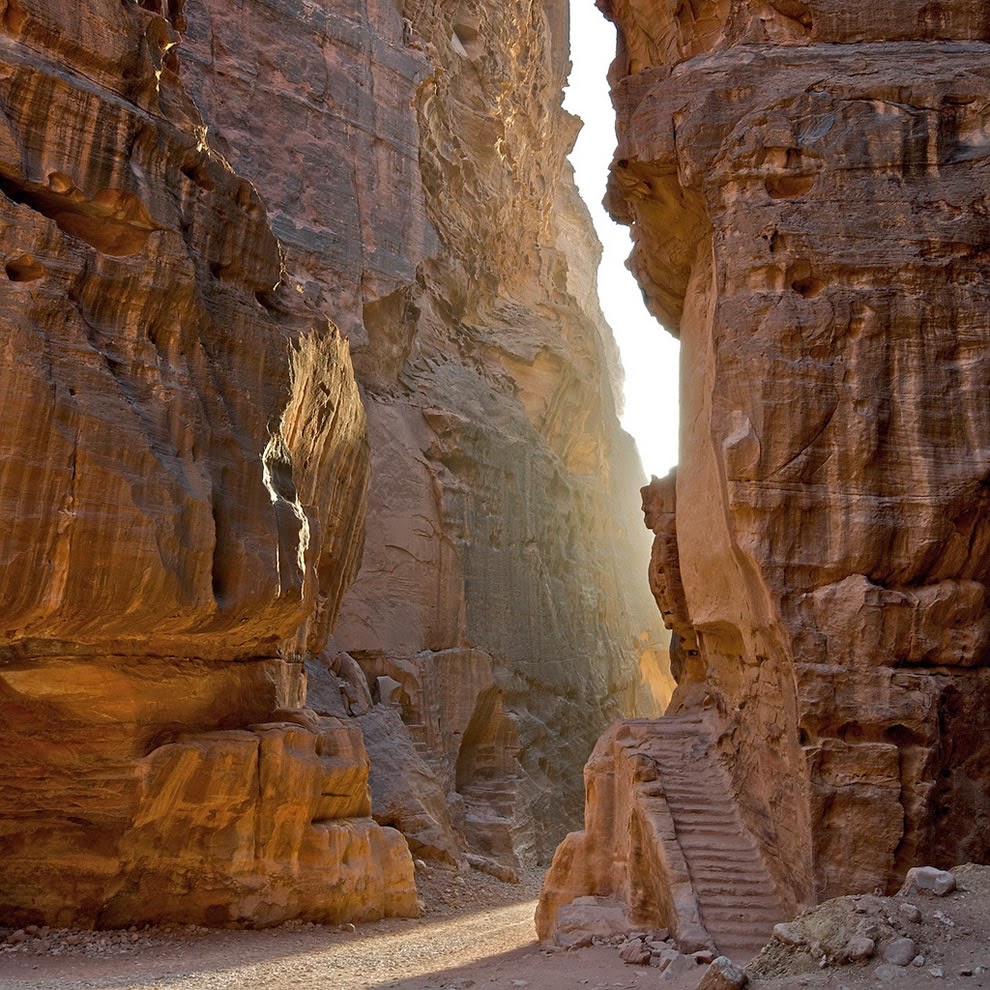Jordanian city of Petra jordan
Jordanian city of Petra jordan
Jordanian city of Petra knows Zaúrōha and Readers in the name of (pink city) relative to the color of the rocks that formed to build unique, a city more like a castle, was the capital of the Nabataeans.
Petra also called commodities, a historic city located in southern Jordan 225 km south of the capital, Amman, to the west of the main road that connects the capital city of Amman and Aqaba.
Petra is considered the most important archaeological sites in Jordan and in the world for lack unparalleled in the world. Recently won second place in the global contest for the Seven Wonders.
Is a complete city carved in the rock pink color (hence the name Petra means rock in Greek) (offset in Nabatieh Rgimo) and Petra also known as the Pink City relative to the color of the rocks that formed to build, a city more like a castle.
Nabateans built in the year 400 BC and made them their capital.
And in the vicinity of the city there is a mountain of Aaron, who is believed to be the tomb of the Prophet featuring Aaron and seven springs that Moses struck the rock with his rod Vtfjrt. Petra was chosen on 7/7/2007 as one of the New Seven Wonders.
Petra was the capital of the Nabataeans and the most important cities of their kingdom, which lasted between 400 BC and 106 AD until, has extended its borders from the coast of Ashkelon in Palestine in the west to the desert of the Levant in the east.
It is north of Damascus, and even the Red Sea to the south form the Petra site average between the civilizations of Mesopotamia and the Levant and the Arabian Peninsula and Egypt's economic importance has held state Nabataeans reins of trade between the civilizations of these regions and their inhabitants were commercial convoys reach them laden with spices and condiments from the southern Arabian Peninsula and silk from Gaza Damascus and henna from Ashkelon and glassware from Tyre and Sidon and the Pearl of the Arabian Gulf.
The end of the state of the Nabataeans was at the hands of the Romans when they besieged and prevented them 105 years of water sources and named it the Arab state. In the year 636 became Petra live on the rest of the population on agriculture but the quake, which hit 746/748 years and earthquakes dispersal of its people.
Photo David Roberts Petra painted in 1839 with the start of flights Orientalists of the Arab world in the nineteenth century was the discovery of Petra in 1812 at the hands of Orientalist Swiss Johann Ludwig Barakaart who learned Arabic and studied Islam in Syria and came to Petra, claiming he is a Muslim from India after that deny Bazzi Islamic and objective to offer sacrifice to the Prophet Aaron, and so he was allowed to enter the local population to the Pink City, has contained a book printed in 1828 and known as the trips in Syria and the Holy Land pictures of Petra.
Among the most important drawings by famed Petra was the lithography drawn by David Roberts of Petra and the Wadi Musa during his visit in 1839 and the more than twenty lithographic plate was printed many of them, which gave Petra fame.
There Petra many paintings and other images that date back to the nineteenth century, which shows the extent of the attention that has brought rediscovered on Europe at the time.
Of famous works of Petra painting watercolor scenes Petra artist Cheranz about 1840 and the first map of the manuscript of Petra in English to draw travelers to eBuddy about 1830 and pictures of Petra filming Freight in 1830 [The width of the cabinet 28 meters and a height of 39.5 meters, and there are several statues of structural (the remains of the bodies of the Nabataeans) and has become one of the seven Wonders.
And Petra, carved into the rock and hiding behind the impenetrable barrier of rugged mountains, which are barely porous mysterious charm.
The traffic Balsik a corridor through a narrow aspects of the towering height that barely allow the passage of the sun, provides a dramatic contrast with the magic to come Suddenly the gorge opens into a natural square famous Treasury of Petra carved into the rock, which glows golden in the sun.
There are many interfaces that entice the visitor on until the ancient city, and every teacher parameters leads to another teacher Bantoa distances.
The overall size of the city and the beautifully carved facades is staggering and makes the visitor gives him an idea of the level of creativity and industry of the Nabataeans who made Petra their capital for more than 2,000 years ago.
It is capital that could Nabateans established an elaborate network of caravan routes which brought spices, incense and myrrh, gold, silver and precious stones from India and the Arabian Peninsula, to be traded in the west.
As a result of the wealth they acquired, they adorned their city with palaces, temples and arches. Once released from the gate entrance to the city and the valley is plenty open.
This section is a narrow entrance known as the Siq door. First Maatmr do is set the jinn It is a set of three cubes of rock just to the right of the aisle and to the crossing more through the slit visitor sees the tomb of obelisks carved in the cliff in a moment turn lane from the broad to the gap dark does not exceed a few feet and suddenly and after several steps you first get to see the finest achievement of Petra, a safe that looks visible under the hot sun and carved in the rock....
source : www.albayan.ae































No comments: